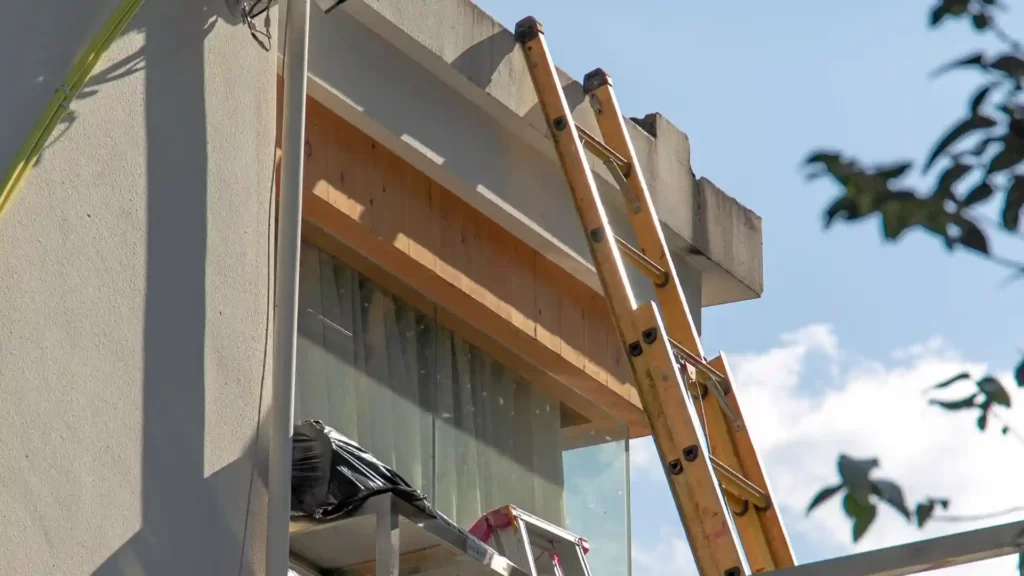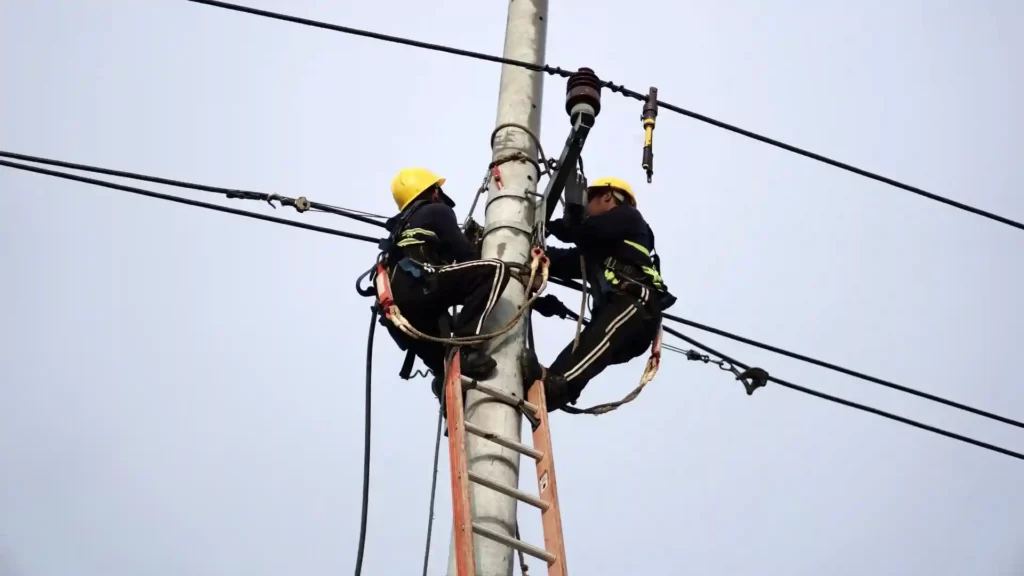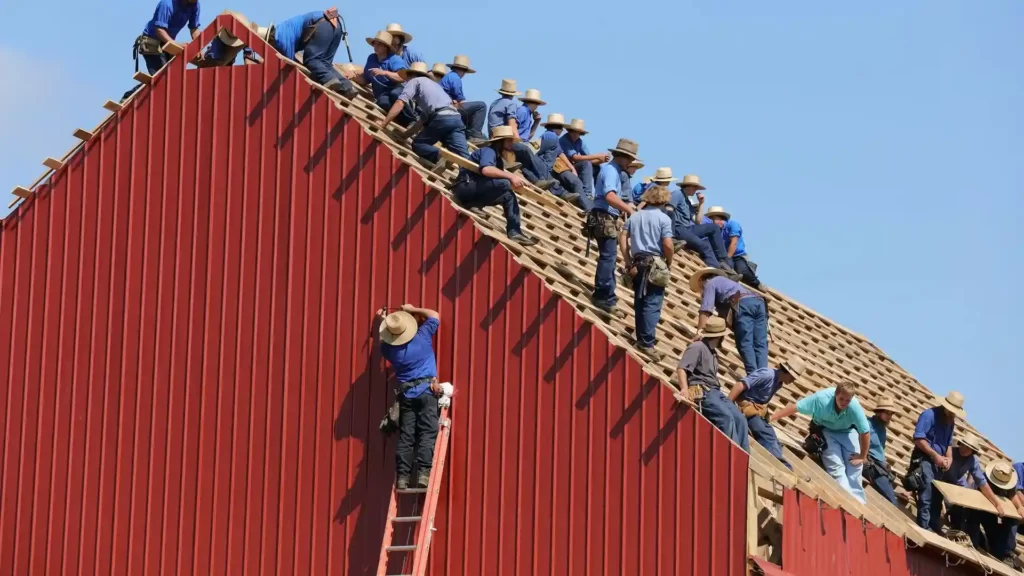Ladders are incredibly versatile tools that you can use in various situations. However, some of their utility comes at the expense of safety. Most people know that ladders are hazardous and that falling from them can result in injury.
However, it is not uncommon for fatalities to occur due to improper ladder use. As a result,understanding how to use a ladder correctly is critical if you want to avoid having any accidents happen to you.
You can take a few precautions, such as inspecting a ladder before using it, never using a ladder with broken or missing sections, and always placing it on solid ground. That being said, there are several additional things that you can do to make sure you are using your ladder safely, and today we are going to cover some of the best practices for ladder usage.
- 1. Choose the Right Ladder
- 2. Carefully Inspect the Ladder Before Every Use
- 3. Make Sure the Ladder Is on a Stable Surface
- 4. When Climbing Up or Down the Ladder, Face It and Use Both Hands
- 5. Never Stand On The Top Rung Of The Ladder
- 6. Avoid Leaning Too Much to One Side
- 7. Avoid Using a Ladder in Bad Weather
- Conclusion
1. Choose the Right Ladder
Before we can talk about best practices for ladder usage, we must make sure you know how to choose a ladder. If you want to be as secure as possible when you use a ladder, you need to be able to find the best ladder for the job. Step and extension ladders are the most common ladders you will find. However, you’ll find many options within these two basic styles.
Two of the most common types are tripod stepladders, which improve stability on uneven surfaces and allow you to get into corners, and twin stepladders, which enable you to work from either side or even allow two people to work off the same ladder.
The type of ladder you will need to use will depend on the situation you need it for. However, no matter which kind of ladder you go with, you need to consider The following three things:
The Length of the Ladder
Once you’ve determined which type of ladder is best for your needs, you must figure out the length you’ll require. People frequently underestimate the dangers of using a ladder that is either too short or too long for the job.
You may overshoot or ascend beyond the highest standing rung if the ladder is too short. Climbing to the top rung of a short ladder may cause you to lose your balance and fall. If the ladder is too long, on the other hand, you may have to position it at an unsafe angle, causing the ladder feet to fall out.
To ensure you’re using the proper length ladder, have enough space to place it at a 4 to 1 ratio. Or, more precisely, you must position it at such an angle that it has 4 feet of length for every foot of height.

Related: Ladders vs Stepladders – When To Use Which One?
The Duty Rating of the Ladder
People frequently overlook ladder duty ratings. The main reason is that most people do not understand what they mean. Simply put, duty rating determines a ladder’s strength and durability.
However, not all ladders are created equal. That is why it is critical to pay close attention to the duty rating of your ladder. Heavy-duty ladders, for example, are designed to withstand the combined weight of a person, their tools, and materials.
Ladders with lower duty ratings are usually lighter and easier to set up. For example, if you’re trying to install a chandelier, you probably shouldn’t use an old wooden ladder. On the other hand, when moving to a new home, you’ll need a full set of moving equipment, and many people often forget that a ladder is necessary.
However, you don’t need a heavy-duty ladder with a 500-pound capacity to reach the plates on the top shelf in your kitchen. A small step ladder would do the job.
The Material the Ladder Is Made From
Wooden ladders were the only option back in the day. Most ladders sold today, however, are made of aluminum or fiberglass rather than wood. Because of their strength, flexibility, and low weight, these materials are an excellent choice for ladders.
Ladders made of aluminum, in particular, are lightweight and resistant to corrosion. On the other hand, the non-conducting nature of fiberglass ladders makes them suitable for use near power lines.

2. Carefully Inspect the Ladder Before Every Use
Before you climb a ladder, inspect it thoroughly for any damage or wear and tear. We can’t stress enough how even the slightest issue with a ladder can quickly escalate into a large one. For this reason, you need to be sure that your ladder is okay before you climb it. The main things you should do before using the ladder are:
- Check the stability of the feet and the steps of the ladder.
- Mae sure the rails are strong.
- Look for any visible damage the ladder might have.
If you detect anything out of the ordinary about your ladder, try not to use it for an extended period. Or better yet, don’t use it until you have a chance to repair it. It’s always better to be safe than sorry, so acquire a new ladder before you start climbing.
3. Make Sure the Ladder Is on a Stable Surface
Following a visual inspection of the ladder, you must ensure you can place it on a level surface. As we’ve mentioned in the intro, ladders are versatile; however, that doesn’t mean you can place them anywhere.
Even if the ground you place your ladder on is level, you need to put in additional effort to stabilize it. Sand or dust on the surface your ladder is resting on can destabilize it, so pay attention to that as well. Only after you have done this can you be entirely sure of your ladder’s safety.
4. When Climbing Up or Down the Ladder, Face It and Use Both Hands
One of the most critical best practices for ladder usage is always facing the ladder when you are on it. It will help if you face the ladder, whether you ascend it or go down. You will have a better balance if you do this.
Additionally, keep your hands free while ascending a ladder so you may hold the rungs. This is especially important if you are climbing above 6 feet. Furthermore, if you need to bring any tools, you should use a bucket or a tool belt.
You must ensure that at least one of your hands is in contact with the ladder at all times. Remember that you should try to hold onto the ladder’s rungs with both hands as much as possible.
5. Never Stand On The Top Rung Of The Ladder
Attempting to reach the top rung of the ladder is the riskiest thing you can do. You will have nothing to hold onto, and your center of mass will be outside the ladder. If you make a mistake, the ladder will collapse beneath your feet.
This action alone has resulted in numerous fatalities over the years. If you ever find yourself in a situation where you can’t reach something with the length of your ladder, it’s better to get a more extended set or a different tool than to risk injuring yourself.
However, if you can’t find a long ladder and must stand on the top rungs, have someone else hold the ladder steady for you. This eliminates the possibility of the ladder slipping out from under your feet.
Even if you get someone to help stabilize the ladder, there is still a chance that you will lose balance because you have nothing to hold onto. Therefore, take all necessary precautions in this situation since you can never be too safe.

6. Avoid Leaning Too Much to One Side
We’ve already discussed how having your center of mass outside the ladder can cause it to fall if you’re on the top rung. Remember that you don’t have to be at the top of the ladder to shift the center of mass. Simply leaning too far to one side will cause the ladder to collapse. If you want to avoid this, position your torso as close to the ladder as possible.
However, if you need to move away from the center of the ladder, make sure you have a counterweight to balance everything out. You can hang a bucket on the opposite side to which you are leaning, or you can have someone hold the ladder for you.
Just keep in mind that the closer you get to the top, the easier it is to fall to one side. Therefore, try to maintain your weight centered between the two rails of the ladder.
7. Avoid Using a Ladder in Bad Weather
You should probably postpone your work if you need to use a ladder outside during a heavy rainstorm or high winds. A strong gust of wind can easily knock you over, no matter how sturdy or heavy-duty your ladder is.
Furthermore, rain or snow can make the ground slick, making it difficult to stabilize your ladder. As a result, you should avoid using ladders in such weather conditions.

Conclusion
With this, we conclude our list of the best practices for ladder usage. Hopefully, this list will assist you in making your ladder use safer and your work faster and more effective. Safety always comes first, so avoid rushing or any risky behavior when climbing a ladder.
Image credits – Photos by Randy Fath, YE JUNHAO, Frank Eiffert, Heri Susilo, Yassine Khalfalli on Unsplash
Joseph is the owner of LadderGeek. He is a home remodeling enthusiast. He has created this blog to share some of his knowledge on Ladder and accessories.



